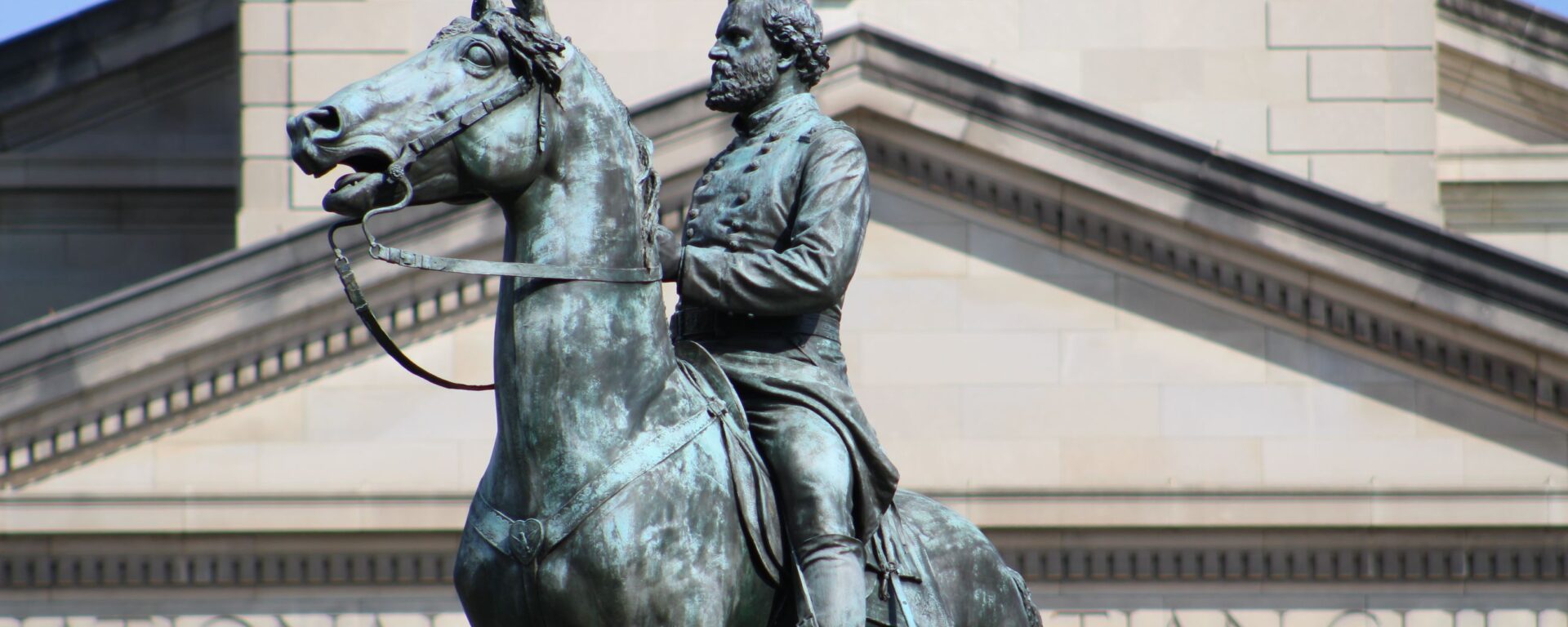“The Rock of Chickamauga”
Thomas Circle sits on the intersections of 14th Street NW, M Street NW, Massachusetts Avenue, and Vermont Avenue. To the north are the trendier blocks of 14th Street, and to the south is the heart of downtown D.C. While Thomas Circle doesn’t define its neighborhood the way Du Pont Circle or Logan Circle do, it has its own personality. The National City Christian Church dominates the circle while the rest is ringed by businesses and hotels. Visit the rooftop bar of the Donovan hotel for an amazing view of the circle and the District.
Major General George Henry Thomas, as the statue is called, stands in the middle of the circle. At 16 feet tall, the bronze of Thomas and his horse – Billy – are roughly twice life-size. The entire monument is about 32 feet high and features a badge of the Army of the Cumberland in a laurel wreath – also in bronze – on each side of the pedestal. The statue was paid for by the Society of the Army of the Cumberland and cost $40,000 (around $800,000 adjusted for inflation).
Thomas’ statue was sculpted by John Quincy Adams Ward. Ward is known for his statue of Washington in front of Federal Hall in New York City, and the pediment of the New York Stock Exchange on Wall Street. His contract stipulated that at least three of the horse’s hooves had to be on the ground to avoid making the animal overly theatrical. Ward worked on the statue for three years from 1876 to 1879.

Thomas was given his sobriquet “The Rock of Chickamauga” after the 1863 Battle of Chickamauga. The Army of the Cumberland had been defeated there by Gen. Braxton Bragg (for whom Fort Bragg is named) and the Union Army was in retreat. While Gen. William Rosecrans (then in command of the Army of the Cumberland) and most of his officers were fleeing the battle, Thomas and his units remained on the field, rallying others to the defense of the retreat. Without Thomas’ staunch defense, the Army of the Cumberland would likely have been destroyed.

Thomas has largely been forgotten in modern history but was considered a national hero in his day. He fought in the Seminole Wars, the Mexican-American War and in the Civil War where he achieved the first major Union victory of the war at the Battle of Mill Springs in 1862. He was well liked by his soldiers, his fellow officers, and the people. The dedication ceremony for his statue – which was erected fewer than nine years after his death – was attended by nearly 50,000 people including President Rutherford B. Hayes and Generals Philip Sheridan and William T. Sherman.
[googlemaps https://www.google.com/maps/embed?pb=!1m14!1m12!1m3!1d1021.9092451563807!2d-77.03205507138932!3d38.90580927289368!2m3!1f0!2f0!3f0!3m2!1i1024!2i768!4f13.1!5e1!3m2!1sen!2sus!4v1473960034419&w=600&h=450]
Resources used for this article:
http://query.nytimes.com/mem/archive-free/pdf?res=9401E6DF163EE63BBC4052DFB7678382669FDE
https://en.wikipedia.org/wiki/Major_General_George_Henry_Thomas

2 thoughts on “Thomas Circle”
Comments are closed.